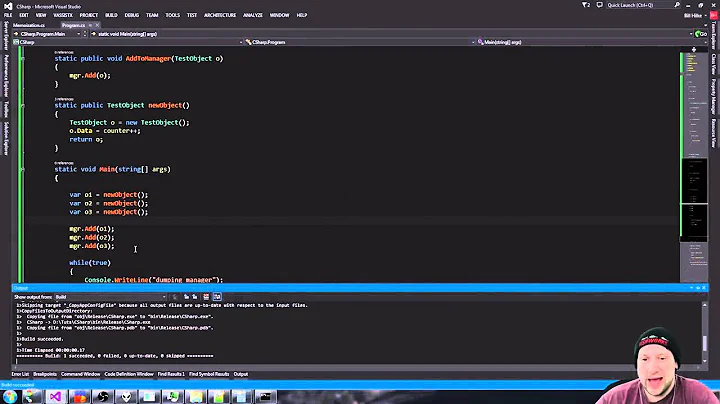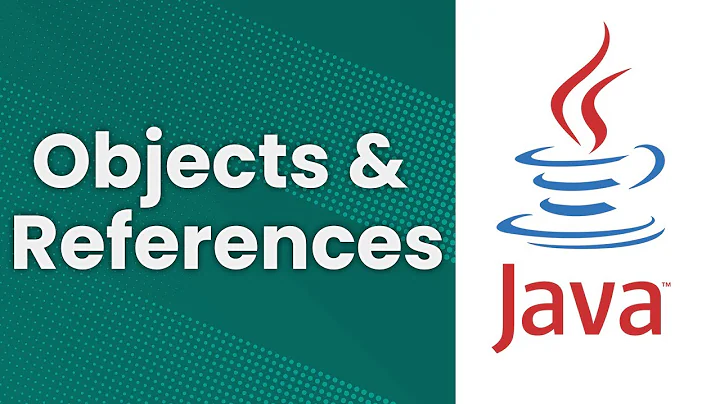Understanding Java's Reference classes: SoftReference, WeakReference, and PhantomReference
Solution 1
The Java library documentation for the java.lang.ref package characterizes the decreasing strength of the three explicit reference types.
You use a SoftReference when you want the referenced object to stay alive until the host process is running low on memory. The object will not be eligible for collection until the collector needs to free memory. Loosely stated, binding a SoftReference means, "Pin the object until you can't anymore."
By contrast, use a WeakReference when you don't want to influence the referenced object's lifetime; you merely want to make a separate assertion about the referenced object, so long as it remains alive. The object's eligibility for collection is not influenced by the presence of bound WeakReferences. Something like an external mapping from object instance to related property, where the property need only be recorded so long as the related object is alive, is a good use for WeakReferences and WeakHashMap.
The last one—PhantomReference—is harder to characterize. Like WeakReference, such a bound PhantomReference exerts no influence on the referenced object's lifetime. But unlike the other reference types, one can't even dereference a PhantomReference. In a sense, it doesn't point to the thing it points to, as far as callers can tell. It merely allows one to associate some related data with the referenced object—data that can later be inspected and acted upon when the PhantomReference gets queued in its related ReferenceQueue. Normally one derives a type from PhantomReference and includes some additional data in that derived type. Unfortunately, there's some downcasting involved to make use of such a derived type.
In your example code, it's not the ref reference (or, if you prefer, "variable") that can be null. Rather, it's the value obtained by calling Reference#get() that may be null. If it is found to be null, you're too late; the referenced object is already on its way to being collected:
final String val = ref.get();
if (null != val)
{
// "val" is now pinned strongly.
}
else
{
// "val" is already ready to be collected.
}
Solution 2
A link: https://community.oracle.com/blogs/enicholas/2006/05/04/understanding-weak-references
PhantomHashMap wouldn't work very well as get always returns null for phantom references.
Caches are difficult, so SoftHashMap might not work as well as you might think. However, I believe Google's collection library contains a general reference map implementation.
You should always check that get returns non-null. (Note, that not checking that the Reference reference itself is not-null.) In the case of interned strings it always will, but (as ever) don't try to be "clever" about it.
Solution 3
It should also be mentioned, as stated on the comment by Truong Xuan Tinh, here: http://blog.yohanliyanage.com/2010/10/ktjs-3-soft-weak-phantom-references/
That JRockit JVM implements weak/soft/phantom references differently than Sun JVM.
Related videos on Youtube
Haywood Jablomey
Updated on July 05, 2022Comments
-
Haywood Jablomey almost 2 years
Can someone explain the difference between the three Reference classes (or post a link to a nice explanation)?
SoftReference>WeakReference>PhantomReference, but when would I use each one? Why is there aWeakHashMapbut noSoftHashMaporPhantomHashMap?And if I use the following code...
WeakReference<String> ref = new WeakReference<String>("Hello!"); if (ref != null) { // ref can get collected at any time... System.gc(); // Let's assume ref gets collected here. System.out.println(ref.get()); // Now what?! }...what happens? Do I have to check if
refis null before every statement (this is wrong, but what should I do)? Sorry for the rapid-fire questions, but I'm having trouble understanding theseReferenceclasses... Thanks!-
 Mehraj Malik over 6 yearsWhy is there a
Mehraj Malik over 6 yearsWhy is there aWeakHashMapbut noSoftHashMaporPhantomHashMapExcellent question, why I did not noticed this before..?? -
 Holger almost 4 yearsThe
Holger almost 4 yearsTheref != nullcheck makes no sense.refwill never benull. -
samshers almost 4 yearsadding to the Q:
strongRef --> weakRef --> objA. Now, willobjAwill be GCed or not, as it has an indirect ref fromstrongRef.
-
-
 Mehraj Malik over 6 yearsThe link has expired.
Mehraj Malik over 6 yearsThe link has expired. -
Brett over 6 years@MehrajMalik Link fixed.
-
samshers almost 4 yearsadding to the Q:
strongRef --> weakRef --> objA. Now, willobjAwill be GCed or not, as it has an indirect ref fromstrongRef. -
samshers almost 4 yearsadding to the Q:
strongRef --> weakRef --> objA. Now, willobjAwill be GCed or not, as it has an indirect ref fromstrongRef. -
 subrat71 almost 4 yearsIf I understand your question correctly, @samshers,
subrat71 almost 4 yearsIf I understand your question correctly, @samshers,objAis eligible for collection as garbage. Pinning aWeakReferenceexerts no influence over the object to which thatWeakReferencepoints. -
samshers almost 4 yearsDoes not having a strong reference up the chain make difference. Because for the
objAto be garbage collected the weak reference has to be removed first right. And a strong reference is pointing to the weak reference making the weak ref ineligible to be GCed -
 subrat71 almost 4 yearsNo, the
subrat71 almost 4 yearsNo, theWeakReferencedoes not need to be collected in order to allowobjAto be collected. TheWeakReferencedoes not keepobjAalive. Rather, it is a way to findobjAwhile it's alive—without influencing that lifetime—and detect when the collector already took it away.








